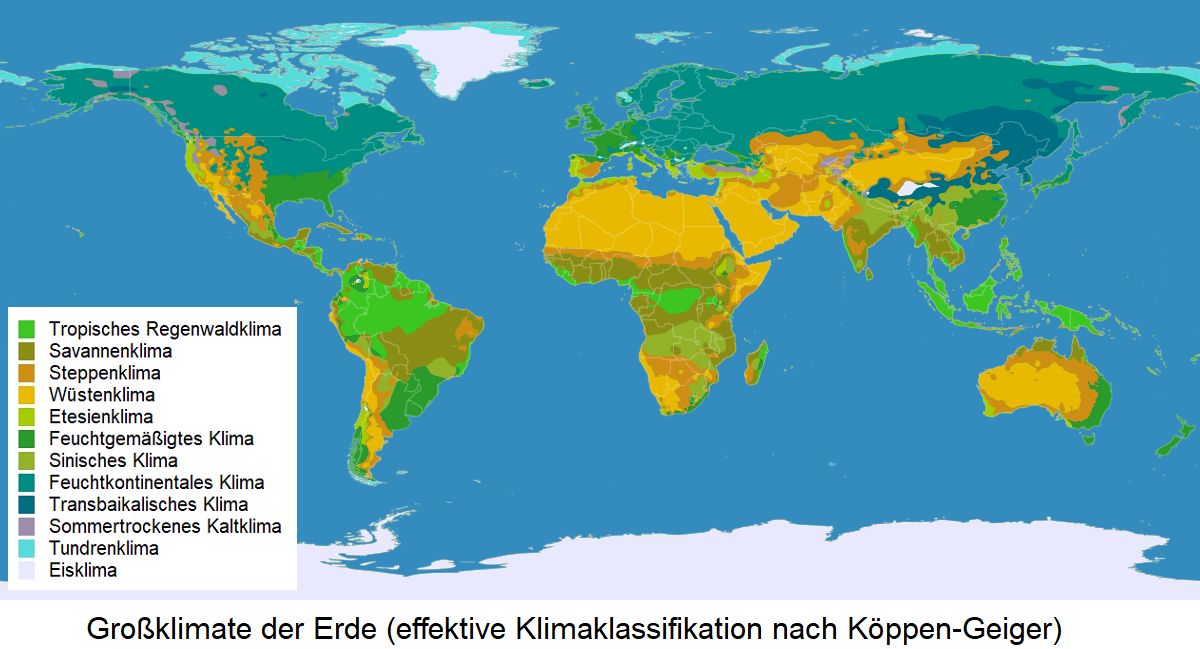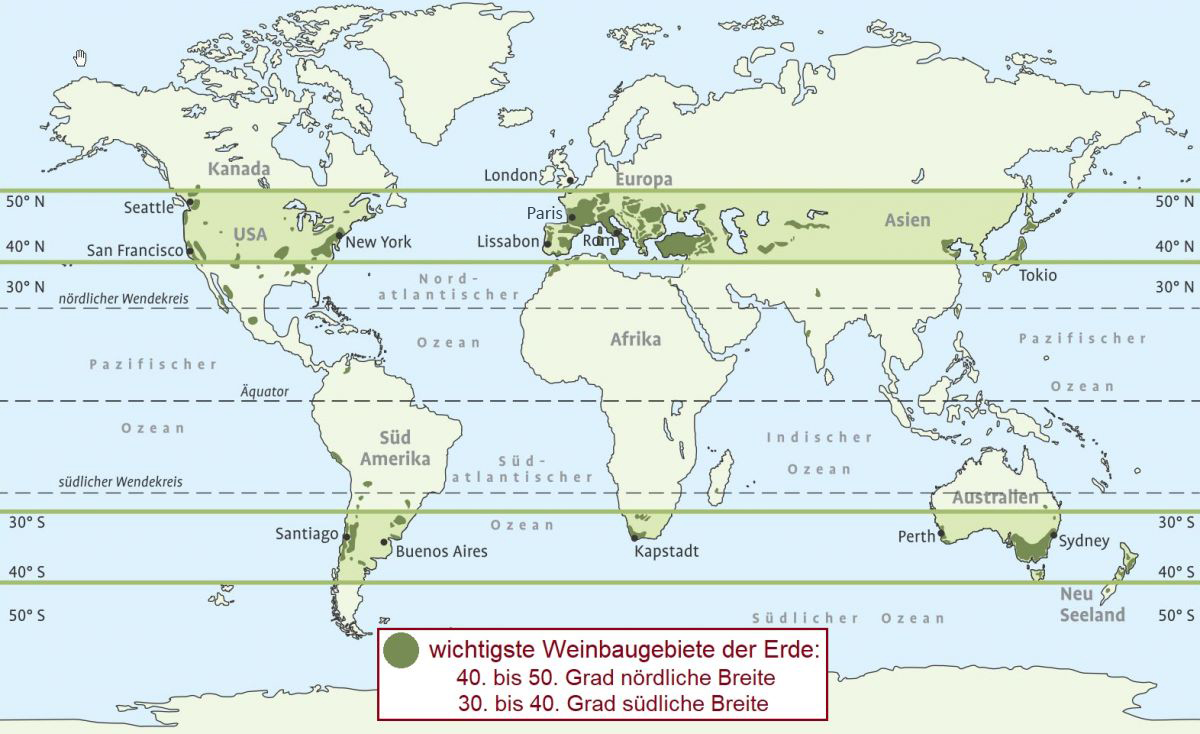Climate
The totality of all meteorological processes or possible weather conditions, including the typical sequence as well as the daily and seasonal fluctuations that are responsible for the average state of the earth's atmosphere at a particular location. The name (Greek klimatos = inclination) is derived from the curvature of the Earth's sphere and the resulting local differences in the angle of incidence of the sun. The climate is not only characterised by processes within the atmosphere, but also by the interplay of all spheres of the earth (continents, oceans, atmosphere) and solar activity. It is one of the most important influencing factors for viticulture.

In contrast to weather (hours to weeks) and weather conditions (a few days to a week, up to a month or a season), climate is understood as a statistically determined state of the earth's atmosphere over a period of several decades (at least 30 years). Areas with the same conditions are categorised into climate zones and thus classified. There are various classifications; the best known was developed by climatologist Wladimir Peter Köppen (1846-1940) and continued by meteorologist Rudolf Geiger (1894-1981).
CLIMATE FACTORS
The climatic characteristics result from many factors such as exposure (solar radiation), precipitation, temperature, humidity and wind, as well as their sequence and interaction. In addition to the soil type, the grape variety planted there and the individual type of winemaking, the climate is a decisive factor for wine quality. However, the very specific climatic conditions for a small area in which the vineyard is located (microclimate, site climate) and even smaller-scale conditions (microclimate) also play an important role. The vine thrives best in warm, temperate zones of the northern and southern hemisphere, the so-called vine belts. These are the relatively narrow areas between 40 and 50 degrees latitude in the northern hemisphere and between 30 and 40 degrees latitude in the southern hemisphere.

CONDITIONS FOR THE GRAPEVINE
Above all, the vine needs warmth and light. According to studies by the Geisenheim Research Centre, the optimum temperature for growth is between 25 and 28 °Celsius. This is largely determined by the altitude. As a rule of thumb, it drops by 0.6 °Celsius for every 100 metres difference in altitude. A hillside location is ideal in terms of vertical sunlight. The thermals are also favourable, as the cold air currents fall down the slope at night, where they warm up in the morning and move back up again during the day.
This is particularly important for quality white wines in terms of acidity. The tops of hills are planted with trees to slow down the flow of cold air, which in Europe is mainly used in Germany, Austria and France. Water bodies (rivers, lakes, seas) have a positive influence on viticulture because they reflect the light. It is no coincidence that many of the world's most important wine-growing regions are located near bodies of water.
The most northerly vineyards for quality wine cultivation are in Germany (51st parallel) and England (52nd parallel). The southernmost wine-growing borders are located at the Cape in South Africa (35° latitude), in Argentina and Chile, as well as on the southern main island of New Zealand (40° latitude). From the equator to 20 degrees north and south latitude, there is no viticulture due to tropical conditions with heat and drought, or only in higher areas up to 2,000 metres above sea level, for example in Kenya on the east coast of Africa. Outside of these areas, there is too little sunlight and precipitation or the risk of cold and frost. The suitability of a region for quality viticulture is described under Viticultural suitability.
INFLUENCE OF THE CLIMATE ON VITICULTURE
The first scientific investigation into the influence of the climate on viticulture was carried out by the Swiss botanist Augustin Pyrame de Candolle (1806-1893) in the middle of the 19th century. The US researchers Albert Julius Winkler (1894-1989) Maynard A. Amerine (1911-1998) from the University of California used these findings. In 1944, they introduced the degree-day summation system, which categorises California into a total of five climate zones.
In the meantime, various climate classification systems have been developed worldwide on this basis. Various criteria are measured in the annual vegetation cycle of the vine or for the entire year and used for the assessment. These are temperature values, number of hours of sunshine and amount of precipitation.
The optimum temperatures for viticulture are between 25 and 28 °C during the ripening period if there is a sufficient supply of nutrients, good irrigation and sunlight. This is when photosynthesis reaches its optimum performance. The ideal annual average is 1,300 to 1,600 hours of sunshine, i.e. around 180 days with seven to nine hours a day. Based on the measured temperature totals (heat totals), the most suitable...
Voices of our members

For me, Lexicon from wein.plus is the most comprehensive and best source of information about wine currently available.
Egon Mark
Diplom-Sommelier, Weinakademiker und Weinberater, Volders (Österreich)